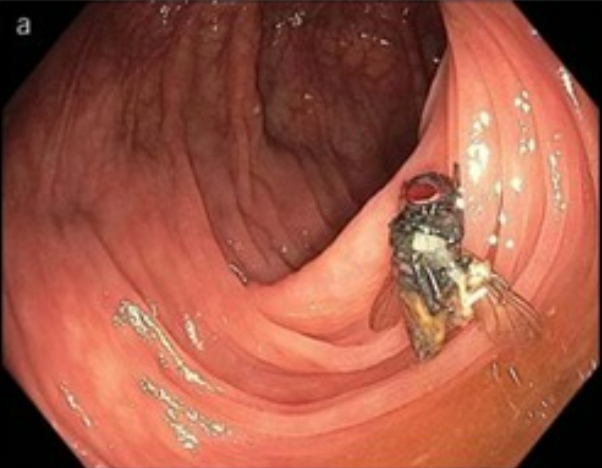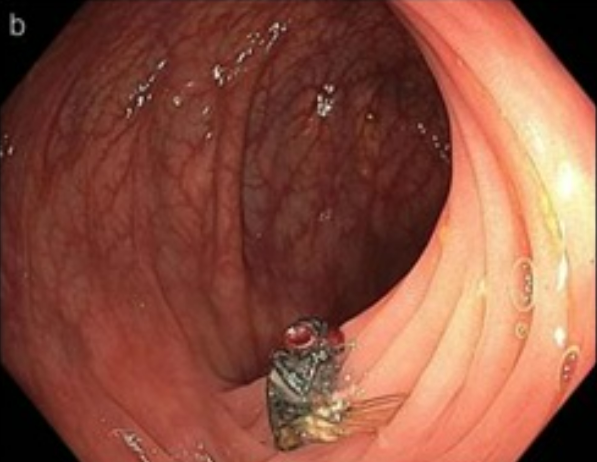Horror as fly found inside Missouri man’s intestines
Bizarre discovery was made during a routine colonoscopy

Your support helps us to tell the story
From reproductive rights to climate change to Big Tech, The Independent is on the ground when the story is developing. Whether it's investigating the financials of Elon Musk's pro-Trump PAC or producing our latest documentary, 'The A Word', which shines a light on the American women fighting for reproductive rights, we know how important it is to parse out the facts from the messaging.
At such a critical moment in US history, we need reporters on the ground. Your donation allows us to keep sending journalists to speak to both sides of the story.
The Independent is trusted by Americans across the entire political spectrum. And unlike many other quality news outlets, we choose not to lock Americans out of our reporting and analysis with paywalls. We believe quality journalism should be available to everyone, paid for by those who can afford it.
Your support makes all the difference.In some situations, people wish they could be a fly on the wall – but maybe not an intestinal wall inside a man’s digestive system.
However, this is where one unfortunate insect found itself.
The bizarre discovery came to light when a 63-year-old patient went in for a routine colon screening in Missouri.
The colonoscopy seemed to be going to plan until the doctors reached the transverse colon in the large intestine and came across a fully intact fly.
Matthew Bechtold, the chief of Gastroenterology at the University of Missouri, told The Independent that he and other doctors prodded the fly and confirmed it was dead.
The patient was bewildered by the discovery and had no idea how the insect got into his body.
He told the doctors he had only consumed clear liquids before his procedure and, two days before, he had eaten pizza and lettuce – but could not recall a fly being on any of the food he ate. He had no symptoms to suggest he had ingested it.

The findings, published in the American Journal of Gastroenterology, represented a “very rare colonoscopy finding and mystery on how the intact fly found its way into the transverse colon”.
Mr Bechtold suggested a couple of ways in which the fly may have made its way to its final resting place – through consumption or by entering up his rectum – yet he and his fellow doctors remain unsure.
He said that if the fly had entered through the patient’s mouth, “you would think that upper digestive enzymes and stomach acid would have degraded the fly. However, the fly was intact, making this hypothesis less likely”.
“If from the bottom, an opening must have been created long enough for the fly to fly undetected into the colon and somehow make its way to the middle part of the colon with no light in a very curvy, large intestine.”
He added: “However, this seems unlikely as well.”
There have been other rare cases in the past where insects have remained intact throughout their journey into the digestive system, the journal revealed. In some incidents, flies and larvae have made their way inside a human and infested the intestines, known as intestinal myiasis.
Insects can deposit eggs onto food, which is then consumed by a human and, in rare cases, survive stomach acid and the gastrointestinal environment, according to the National Library of Medicine.
In some cases where larvae have been found in the stools of some patients, they have experienced diarrhoea, abdominal pain, nausea and vomiting.
The Centres for Disease Control and Prevention does not track cases of intestinal myiasis but does make note of one particular case in 1984 when a one-year-old child was experiencing “moving worms” in her stool after being fed over-ripe bananas.
The doctors at the time did not prescribe any medicine but instead told the parents to cover up their fruit from flies. The “moving worms” then stopped appearing.
Join our commenting forum
Join thought-provoking conversations, follow other Independent readers and see their replies
Comments